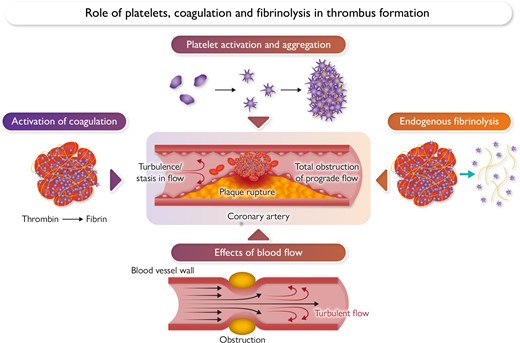-
Views
-
Cite
Cite
Diana A Gorog, Point-of-care tests of platelet reactivity and clot strength in risk assessment post-PCI: more insight into what really matters, European Heart Journal, Volume 45, Issue 25, 1 July 2024, Pages 2232–2234, https://doi.org/10.1093/eurheartj/ehae247
Close - Share Icon Share

Graphical Abstract
Platelet activation by exposure of plaque constituents and high shear forces, together with activation of coagulation, result in thrombus formation. This triggers simultaneous activation of endogenous fibrinolysis, and this, together with the effects of flow, may prevent vessel occlusion or restore vessel patency following thrombotic occlusion.
© The Author(s) 2024. Published by Oxford University Press on behalf of the European Society of Cardiology. All rights reserved. For commercial re-use, please contact [email protected] for reprints and translation rights for reprints. All other permissions can be obtained through our RightsLink service via the Permissions link on the article page on our site—for further information please contact [email protected].
This article is published and distributed under the terms of the Oxford University Press, Standard Journals Publication Model (https://dbpia.nl.go.kr/pages/standard-publication-reuse-rights)
You do not currently have access to this article.





